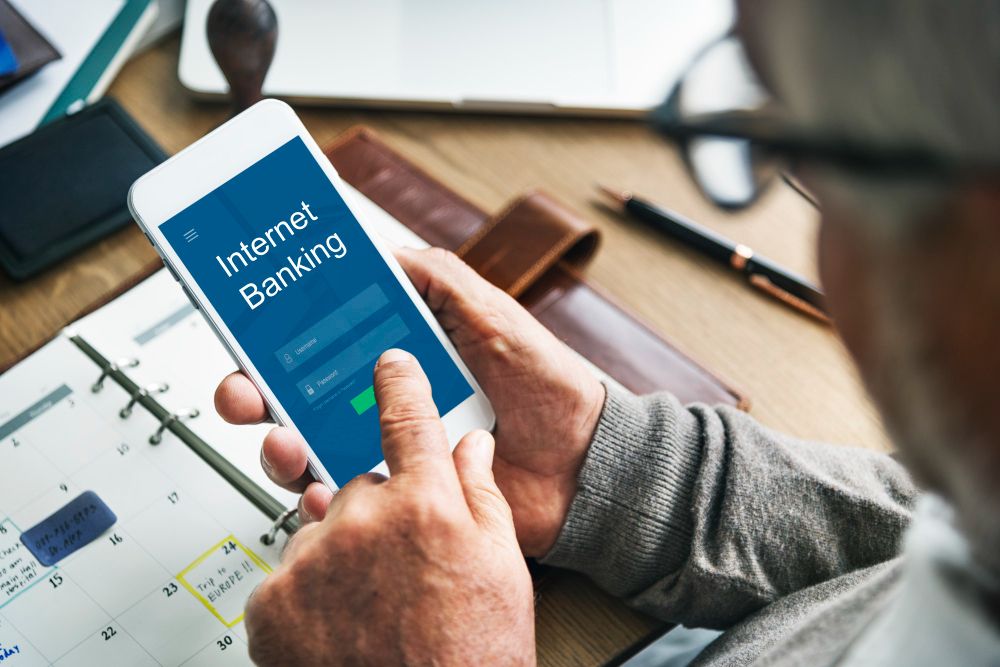Everyone knows that banking is rapidly evolving; it is one of the fastest-moving industries today. Just take a look at how it has grown in recent years. When was the last time you cashed a physical cheque? We don’t know about you, but we can’t even remember where we keep our checkbooks!
So it’s really not a shock that digital banking has changed the game for businesses (and customers) in a huge way – but what can be expected from now until 2030? Let’s dive into some of the key advancements to expect for the financial industry throughout the roaring 20s.

1. All Businesses Will Accept Cryptocurrency Payments
You didn’t think a list of banking trends to expect before 2030 would be without cryptocurrency, did you? Of course not! But what’s so interesting about the direction of crypto anyway?
You’ve read that crypto is becoming more popular, and you’ve read that it’s risky at times, but did you expect that crypto will rival (as in, literally be used just as much!) fiat currencies such as the British pound or US dollar? It sounds like a long way off, but it really isn’t at all.
As more and more businesses are starting to accept crypto on their websites and even in stores, the trajectory for alternative currencies is looking extremely steep. Crypto has done a great job of shaking off its sketchy past (referring to the mysterious parts of the web) and is now being used for completely legitimate business transactions all over the world in a variety of sectors.
Even in 2022, crypto payment gateways are becoming readily available for different types of businesses to embed on their websites (like Monneo). Even now, it’s gotten to a point where a business that does not accept crypto is at a big disadvantage. Deregulation is a very big deal and we are totally here for it.

Cryptocurrency can deliver financial freedom to people, and it gives hope to all classes and demographics to have full control over their finances on a global scale. There’s still a long way to go, but with so much technology and capital invested into crypto already, the time to get there is looking very brief. Blink, and you’ll miss it!
Thinking it’s all just a fad? Well, the data shows that by the end of 2022, 34 million US citizens will own crypto. Isn’t that just staggering?
2. Wearable Banking Will Take Great Leaps
Tapping a payment machine with your smartwatch – for your coffee in the morning might feel futuristic, but this technology hasn’t even gotten started yet. As smart glasses (such as Google Lens technology) are being created, simply glancing at a payment terminal could be the next way to pay.
Of course, multi-purpose chips are expected to be available in the next decade to be inserted/attached to fingertips too. The app is simple but not enough anymore. It’s clunky, takes time, and requires too much attention.
Imagine walking into a concert or onto a plane without the need to show a valid ticket. Simply wearing a device that emits a signal to a barrier will confirm you’ve made a payment or have valid credit scores to make a payment in installments. Wearable banking is going to get extremely efficient very quickly.
3. AI Banking Will Reach a New Level of Usefulness
The use of AI to make banking more personal will also mean that it becomes more helpful. 24/7 customer service is currently offered by good banks, but it’s not always great – long queues or being put through to questionable quality, third-party call centers aren’t always helpful. Currently, it’s observable that banks are testing out AI to help customers, such as offering automated chatbots with popular FAQ questions and answers, but they are very limited.
There are some good banking CRM platforms out there, but we fully expect banking customer service AI to enter new levels of conversation and help. They will surely surpass the knowledge of a human as they are integrated into the banking database, saving time, money, and trouble for everyone involved.

4. Private Banking Services Will Become More Accessible
It is almost a guarantee that in the near future that banks will offer highly customizable and tailored banking services specifically for your spending habits, saving habits, and uses. This will, of course, apply more to businesses that use a wider range of services, such as international payments or maybe different types of lending.
Why is this such a sure thing? Well, just look at how every other aspect of technology is becoming more personalized. Algorithms are learning to please the user (you!) by being more specific; tailored ads are more successful – because they are relevant. Banking needs to be relevant too.
5. Major Security Advancements Will Take Place
The 4 points above can only be made possible if security is ensured by digital banks. After all, with new technology being rolled out, it certainly poses security questions. We’re living in a world that is largely untested, the virtual metaverse, the global use of crypto, and wearable technology. Customers expect security and also expect it to rapidly develop alongside the other features.
You simply cannot have one without the other, and digital banking security is absolutely imperative. It is a real guarantee that digital banking security advancements will make great leaps and bounds – because if it doesn’t, customers will simply refuse to use them.
We’ve seen at fintech conferences that security is at the heart of everything happening – and for a good reason. Banks recognize that without this key element in check, nothing is possible. Whilst you’re here! Check out our guide to keep your crypto wallet safe.
Conclusion – How Does the Future Look for Digital Banking?
So there we have it. You can probably agree that it’s an exciting road ahead for banking. Surely there will be other surprises and advancements that pop up along the way too! One can only imagine how the digital financial landscape will change and function by 2030.
For now, one thing is for sure – traditional banks are being left in the dust by digital banking sites, and they better adapt if they want to survive. Businesses expect modern solutions to problems, and the rise of crypto, wearable tech, and AI has given businesses the power of choice – to pick the best bank service for their needs, no matter where they are in the world.

